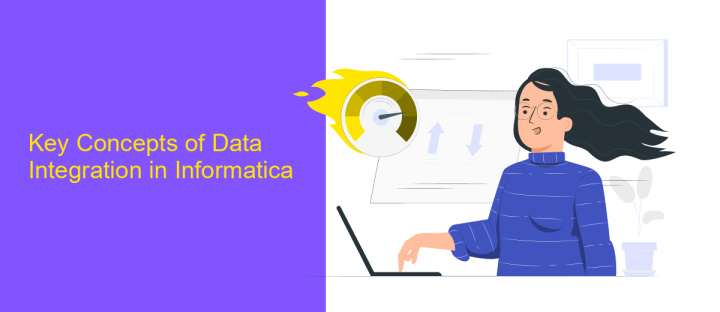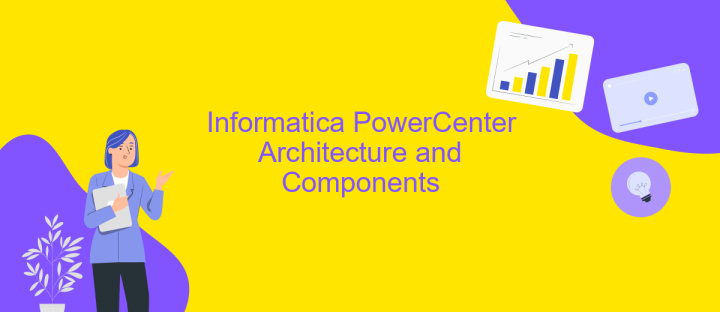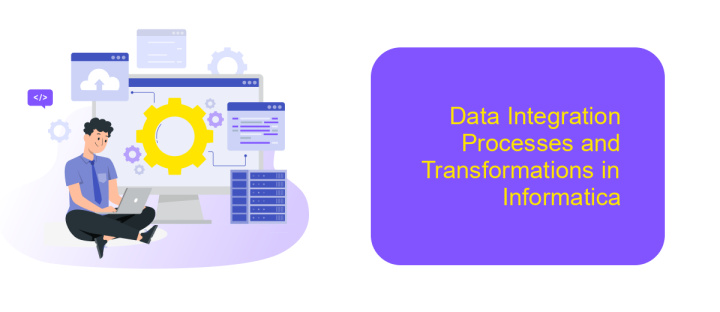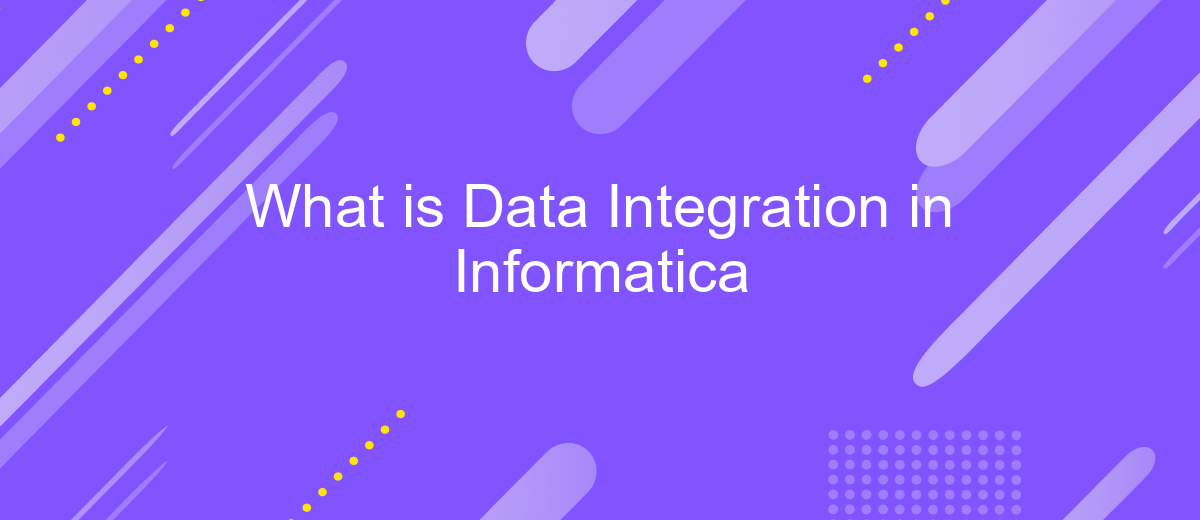What is Data Integration in Informatica
Data integration in Informatica is a crucial process that involves combining data from various sources to provide a unified view. This process is essential for businesses aiming to leverage comprehensive data insights for informed decision-making. Informatica, a leading data integration tool, offers robust solutions to streamline data management, ensuring accuracy, consistency, and accessibility across diverse data environments.
Introduction to Data Integration and Informatica
Data integration is a critical process in today's data-driven world, enabling organizations to consolidate data from various sources into a unified view. This process ensures that data is consistent, accurate, and accessible across different systems, enhancing decision-making and operational efficiency. Informatica, a leading provider of data integration solutions, offers robust tools to streamline this process, ensuring seamless data flow and integration.
- Combines data from diverse sources into a single, cohesive dataset.
- Ensures data consistency and accuracy across platforms.
- Facilitates improved decision-making through comprehensive data analysis.
- Enhances operational efficiency by automating data workflows.
- Supports compliance with data governance and regulatory requirements.
Informatica's data integration solutions are designed to handle complex data environments, providing scalable and flexible options for businesses of all sizes. By leveraging Informatica's tools, organizations can efficiently manage and integrate their data, ensuring that they remain competitive in an increasingly digital landscape. With features such as real-time data processing and extensive connectivity options, Informatica empowers businesses to unlock the full potential of their data assets.
Key Concepts of Data Integration in Informatica

Data integration in Informatica involves combining data from various sources into a unified view, ensuring consistency and accessibility across the organization. Key concepts include ETL (Extract, Transform, Load) processes, which are central to moving and transforming data. Informatica PowerCenter is a widely used tool that facilitates these processes, allowing users to extract data from diverse systems, transform it according to business rules, and load it into target systems. This ensures that data is accurate, timely, and usable for analytics and decision-making.
Another important aspect is data quality management, which ensures that the integrated data is clean, consistent, and reliable. Informatica provides robust solutions for data profiling, cleansing, and validation, which help maintain high data quality standards. Additionally, integration services like ApiX-Drive can complement Informatica by automating workflows and connecting various applications seamlessly, enhancing the overall efficiency of data integration efforts. These tools and techniques collectively enable businesses to harness the full potential of their data assets, driving informed decision-making and strategic growth.
Informatica PowerCenter Architecture and Components

Informatica PowerCenter is a robust data integration tool that offers a scalable architecture capable of handling complex data processing tasks. It is designed to extract, transform, and load data efficiently across a variety of systems. The architecture is built on a client-server model, ensuring seamless communication and data flow between components.
- Repository Service: Manages metadata and offers access to various objects within the repository, facilitating collaboration and version control.
- Integration Service: Executes data transformation tasks and manages data movement between sources and targets.
- Repository Database: Stores metadata, mappings, and other configuration details essential for data integration processes.
- PowerCenter Client Tools: Includes tools like Designer, Workflow Manager, and Workflow Monitor, enabling users to design, execute, and monitor ETL processes.
- Administration Console: Provides a web-based interface for managing services, monitoring performance, and configuring security settings.
The Informatica PowerCenter architecture ensures high availability and reliability, making it a preferred choice for enterprises seeking robust data integration solutions. Its modular design allows organizations to scale according to their needs while maintaining optimal performance across various data sources and targets.
Data Integration Processes and Transformations in Informatica

Informatica is a robust data integration tool that facilitates seamless data movement across diverse systems. The platform enables organizations to consolidate data from various sources into a unified, cohesive view. Through its intuitive interface, users can design and manage complex data workflows, ensuring data consistency and accuracy.
At the core of Informatica's capabilities are its transformation processes, which allow data to be cleansed, enriched, and modified as it moves through the system. These processes ensure that data is not only integrated but also optimized for decision-making purposes. Transformations can be simple, such as filtering and sorting, or complex, involving multiple data manipulations.
- Aggregation: Summarizing data to provide meaningful insights.
- Join: Combining data from different sources based on common attributes.
- Lookup: Retrieving relevant data from tables to enhance datasets.
- Filter: Removing unnecessary data to streamline processes.
Ultimately, Informatica's data integration processes and transformations empower businesses to harness the full potential of their data. By ensuring data is accurate and actionable, organizations can make informed decisions, drive growth, and achieve strategic objectives.
Benefits and Use Cases of Data Integration with Informatica
Data integration with Informatica offers numerous benefits, including enhanced data accuracy and consistency across various platforms. By consolidating data from disparate sources, organizations can achieve a unified view, enabling better decision-making and strategic planning. This integration reduces redundancy and minimizes errors, leading to improved operational efficiency. Additionally, Informatica's robust data transformation capabilities ensure that data is cleansed and standardized, making it more reliable for analytics and reporting.
Informatica is widely used in various industries for its scalability and flexibility. For instance, in the healthcare sector, it enables seamless integration of patient records from multiple systems, enhancing patient care and streamlining administrative processes. In retail, it supports real-time data synchronization, allowing businesses to optimize inventory management and personalize customer experiences. Tools like ApiX-Drive can further streamline the setup of these integrations by automating data workflows, saving time, and reducing the need for extensive manual configuration. This makes Informatica an invaluable tool for businesses aiming to leverage data as a strategic asset.
FAQ
What is Data Integration in Informatica?
Why is Data Integration important?
How does Informatica facilitate Data Integration?
What are the challenges of Data Integration?
How can automation improve Data Integration processes?
Apix-Drive is a simple and efficient system connector that will help you automate routine tasks and optimize business processes. You can save time and money, direct these resources to more important purposes. Test ApiX-Drive and make sure that this tool will relieve your employees and after 5 minutes of settings your business will start working faster.

